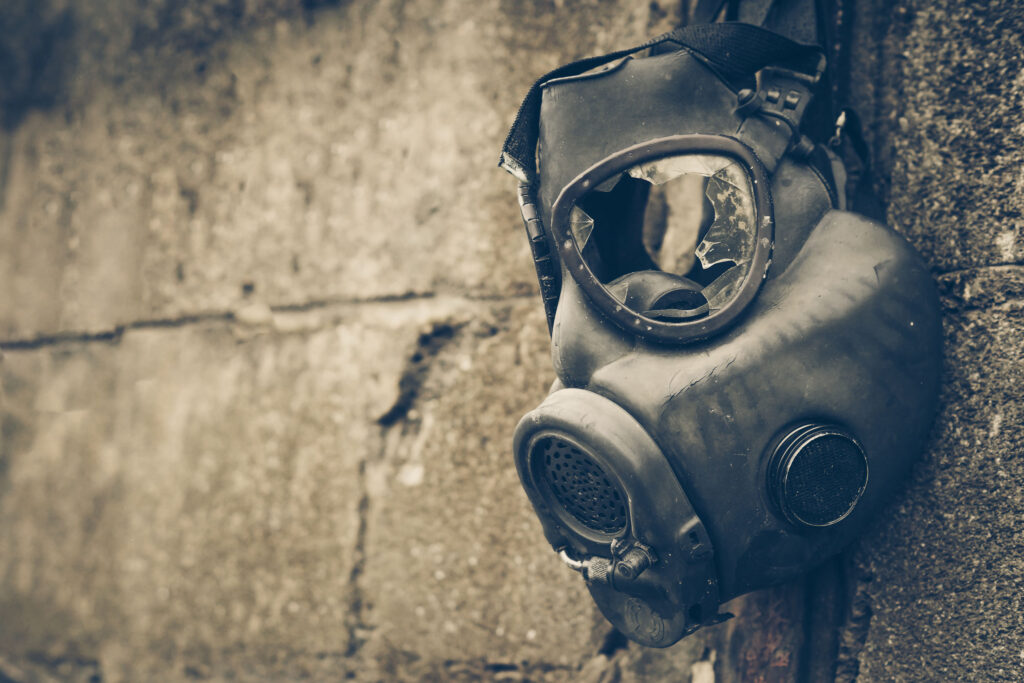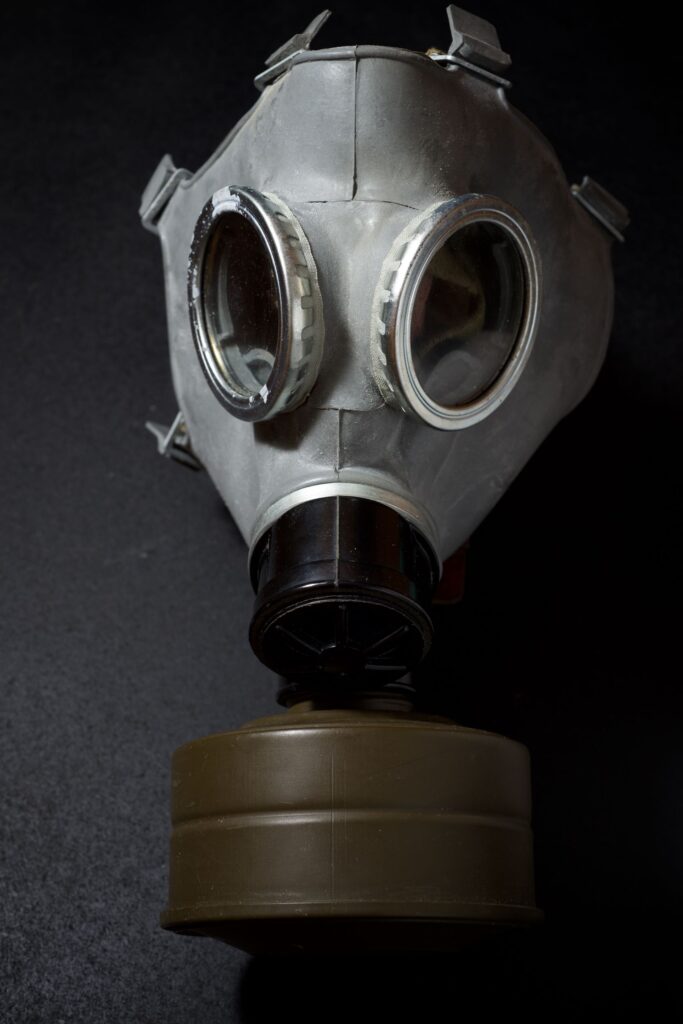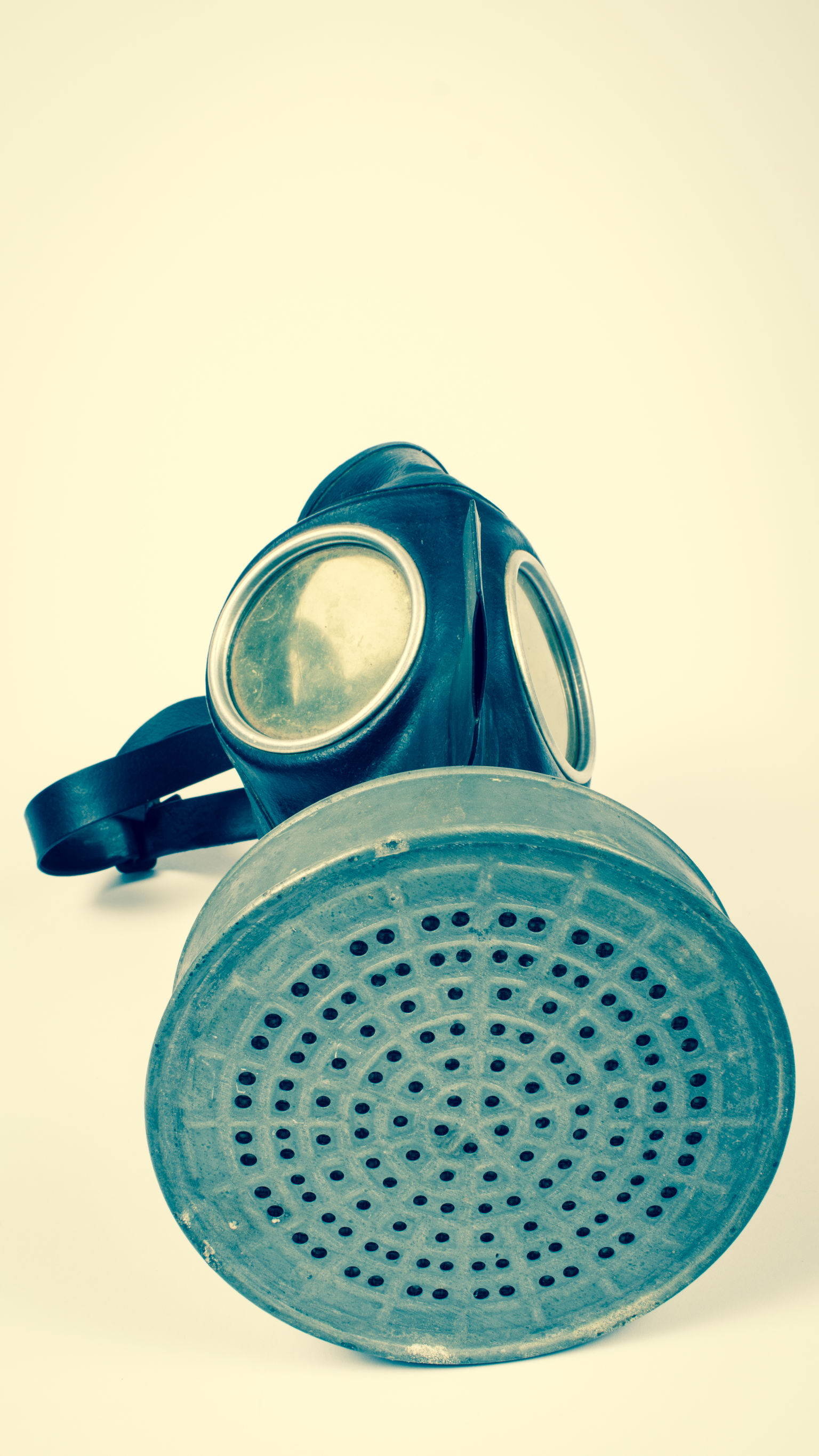
Gas masks, as we know them today, have been used since 1915. But do they contain asbestos?
Gas masks manufactured post-WWII do not contain asbestos in filters and are safe to wear. Gas mask filters manufactured during WWII and prior do contain asbestos and may be found in military surplus stores. Do not use these filters or wear the masks that accompanied the filters.
Prolonged exposure to asbestos fibers can cause major illnesses, so let’s discuss how to avoid filters made with them.
What Is Asbestosis?
Asbestosis is long-term inflammation and scarring of the lungs due to asbestos fibers. Asbestos is a heat-resistant, fibrous silicate mineral that can be woven into fabrics. It is used in fire-resistant and insulating materials and often found in homes that were built before the 1980s. The fibers are most commonly found in the insulation, but they can be found in other places in the home.
If asbestos is found in your home, get it taken care of by experts immediately. They have equipment that protects them from asbestos.
When Were Gas Masks Invented?
Garrett Morgan patented the Morgan safety hood and smoke protector, later called the gas mask, in 1914. It was not used until 1915 during the first World War. Gas masks were developed in WWI to protect soldiers from the effects of chlorine gas. Chemical warfare using chlorine gas was first released by German troops on April 22, 1915, against United States troops.

Luckily, the gas mask invented by Garrett Morgan did not contain asbestos in the filter. However, as different versions of the mask were developed and introduced over time, asbestos managed to make its way into the filters. Unfortunately, the effects of asbestos were not discovered until long after WWII ended, and many soldiers suffered related health issues for the rest of their lives.
What Is A Gas Mask?
A “gas mask is a mask used to protect the wearer from inhaling airborne pollutants and toxic gases. The mask forms a sealed cover over the nose and mouth, but may also cover the eyes and other vulnerable soft tissues of the face. Most gas masks are also respirators, though the word gas mask is often used to refer to military equipment, such as a field protective mask.” Source
What Gas Masks To Avoid
The gas masks that were used in WWII should be avoided in almost every case. The filters contain asbestos, and extensive exposure will cause scarring in your lungs, which can not be cured. If you do own a gas mask that was made during WWII, clean it at least twice and make sure to clean or replace the filter. To make sure all of the asbestos in the filter has been removed, have it tested for asbestos before you wear it.
The most common chemical found in WWII gas masks is “blue asbestos, a category one carcinogen. Over time two things happen – firstly asbestos changes to become finer, the dust is able to pass through gas mask filters more easily, and is sometimes found in gas mask cases.
Secondly, the structural integrity of the mask degrades, filters collapse, steel canisters corrode and hoses split. This results in asbestos being released from the mask and contaminating the surroundings, and anyone wearing the mask, however briefly, is at high risk of inhaling the asbestos fibers.”Source

Symptoms Of Asbestos Exposure
Symptoms of asbestosis: shortness of breath, a persistent cough, wheezing, extreme tiredness or fatigue, pain in your chest or shoulder, and, in more advanced cases, clubbed/swollen fingertips.
If you have any of these symptoms, see a doctor immediately for treatment. Unfortunately, there is no cure for asbestos sickness. However, your doctor can prescribe medications that will temporarily ease your symptoms. Source
Luckily, if you are only exposed to asbestos for a short period of time, then it is not very likely that you will become sick because of it. However, the longer that you are exposed, the more likely you will become ill because of it. If you think that you have been exposed to asbestos, consult your doctor and test the area where you think you were exposed, just in case the area does have asbestos.
How Long Can I Wear A Gas Mask?
Modern gas masks, otherwise known as respirator masks, do not last as long as you think. While the actual mask lasts at least one year, depending on what version you are using, the filter needs to be replaced after just several hours of use, especially when it comes to the environment and gas concentrations. Even if you are breathing in “uninfected air,” they last less than 24 hours.
The gas mask filter that was used during WWII only lasted around eight hours. The most common type of respirator is a half-face, dual cartridge respirator. Respirators must be equipped with HEPA filtered cartridges (color-coded purple) or an N-100, P-100, or R-100 NIOSH rating. These cartridges are specific for filtering out asbestos fibers and are the only ones that protect you from them.
Where To Find Gas Masks
If you want to buy a gas mask or respirator mask, you can find them on any large shopping website. If you are looking for older versions, like the type that was used in WWII, then you will have better luck of finding one on a military surplus website or in a military surplus store. Not every store that you go to will have them, but if you search, then you will be able to find one eventually.
However, if you are looking for an older gas mask or one that has been used, make sure to clean it thoroughly at least one time. If you find a gas mask that was used during WWII, have the filter tested for asbestos before you use it or put it in an open area for display.
The asbestos in the filter breaks down over time and will make you and your family sick after long exposure to it. It is important to be overly cautious when it comes to potential exposure to asbestos.